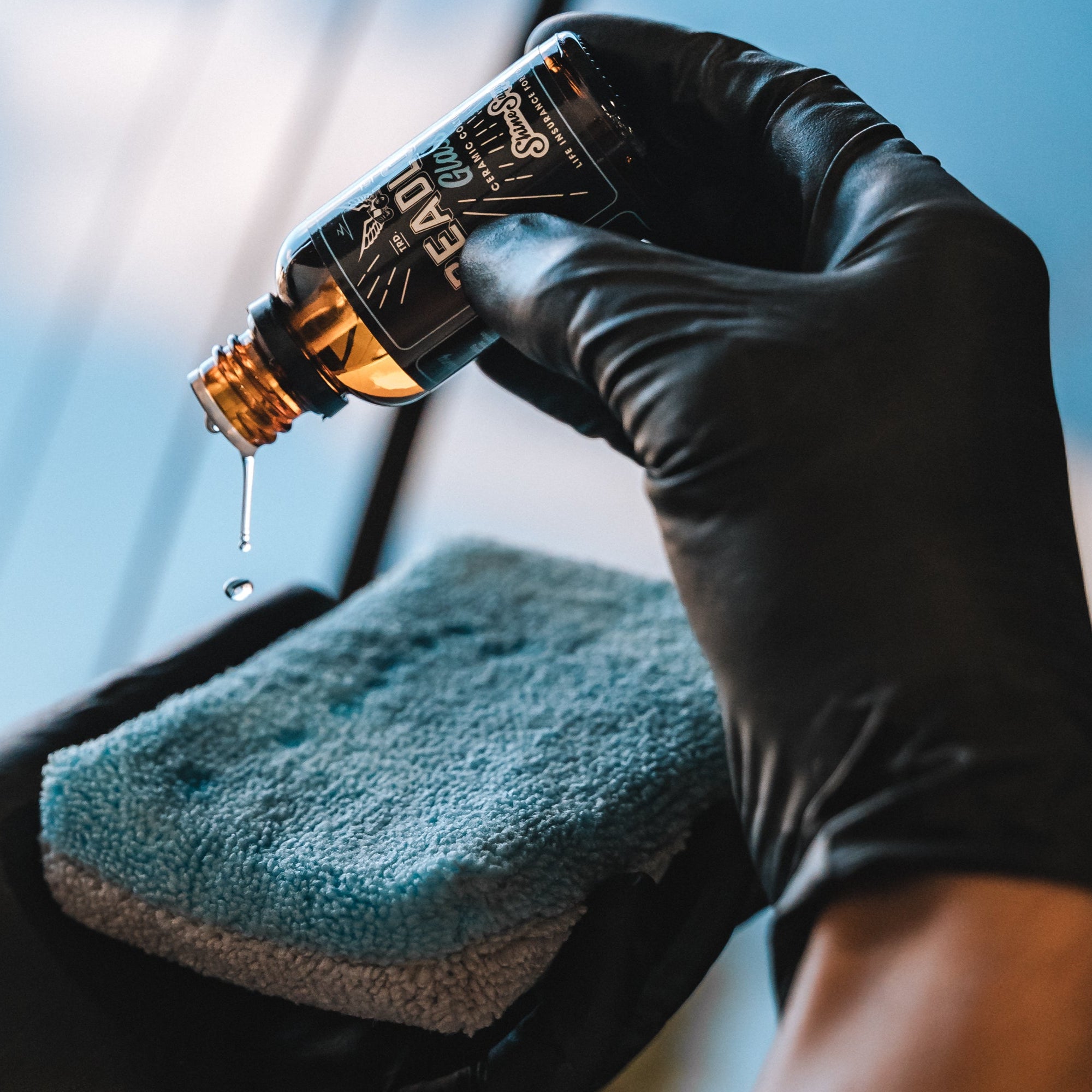A Comprehensive Guide to the Sorts Of Ceramic Coating on the Market
Ceramic finishings have actually arised as a pivotal service throughout numerous markets due to their special buildings and applications. As we discover the distinctive characteristics and applications of these finishings, the effects for efficiency and long life become progressively obvious, increasing concerns about which type might finest match your demands.
Understanding Ceramic Coatings
Ceramic finishings are innovative safety remedies that have acquired popularity in different markets, specifically in vehicle and aerospace applications. These coverings include a fluid polymer that, when healed, forms a long lasting, hydrophobic layer on the surface area of the substratum. This layer supplies improved resistance to ecological contaminants, UV radiation, and chemical direct exposure, thereby extending the life and visual allure of the underlying product.
The essential part of ceramic layers is silica, which contributes to their firmness and durability. The application process normally involves surface preparation, application of the coating, and healing, which can be attained with warmth or UV light. Once cured, ceramic layers exhibit outstanding bonding homes, allowing them to stick strongly to a variety of surfaces, including metals, plastics, and glass.
In enhancement to their protective features, ceramic finishes likewise supply simplicity of maintenance. Their hydrophobic nature decreases the adherence of dirt and crud, making cleaning less complex and less frequent. On the whole, the adoption of ceramic coatings represents a considerable development in surface security technology, providing both practical and visual benefits throughout numerous industries.
Sorts Of Ceramic Coatings
Various kinds of ceramic coatings are offered, each designed to satisfy details performance demands and applications - Paint Protection Film. The most common types consist of:
Silica-based Coatings: These coverings mostly are composed of silicon dioxide and are known for their toughness and chemical resistance. They are extensively utilized in vehicle and commercial applications.
Titanium Dioxide Coatings: Prominent for their photocatalytic residential or commercial properties, titanium dioxide finishings are commonly used in atmospheres where self-cleaning and antifungal residential properties are preferable, such as in structure products and vehicle surfaces.
Zirconia Coatings: Defined by their high-temperature stability and thermal resistance, zirconia finishings are utilized in applications such as generator engines and high-performance automobile parts.
Alumina Coatings: Showing outstanding solidity and thermal security, alumina coatings are often utilized in wear-resistant applications, consisting of cutting tools and industrial machinery. - Paint Protection Film
Crossbreed Coatings: Integrating the homes of different products, hybrid layers offer enhanced performance features, making them appropriate for one-of-a-kind and requiring applications.
Each type of ceramic finish serves distinct functions, allowing customers to select one of the most appropriate remedy based on specific ecological problems and efficiency requirements.
Benefits of Ceramic Coatings
Coatings play a crucial role in boosting the performance and longevity of surface areas throughout numerous industries. Ceramic finishings, specifically, deal countless helpful hints benefits that make them increasingly popular amongst suppliers and customers alike. One of the primary benefits is their phenomenal toughness. These coatings are immune to scratches, chemicals, and UV rays, guaranteeing that the underlying surface area remains safeguarded in time.
In enhancement to longevity, ceramic layers supply excellent hydrophobic buildings, permitting very easy cleaning and maintenance. This water-repellent nature lessens the adherence of dirt, crud, and other pollutants, which can prolong the aesthetic charm and performance of the surface area. Ceramic finishings can substantially improve thermal resistance, making them optimal for applications that withstand high temperatures.

Application Refine
When applying ceramic finishings, a precise technique is important to achieve optimum outcomes. A tidy surface area ensures correct bond of the finishing.
When the surface is prepped, the next step is to apply the ceramic coating. The image source coating should be used in thin layers, as thicker applications can lead to irregular surfaces.
After application, the covering requires a details curing time, usually varying from a few hours to a full day, depending on the item. Complying with these actions faithfully will make best use of the performance and durability of the ceramic layer, offering a resilient safety layer for the surface area.
Upkeep and Durability
To guarantee the longevity and performance of a ceramic finish, routine maintenance is essential. Ceramic finishes, recognized for their toughness and protective high find out this here qualities, require specific care regimens to optimize their lifespan and performance. The primary step in upkeep includes routine cleaning with pH-neutral soap, preventing rough chemicals that can break down the finish. It is recommended to clean the vehicle on a regular basis, ideally every two weeks, to avoid the build-up of pollutants that can compromise the coating's honesty.
In addition to routine cleaning, periodic assessments are critical. Try to find indicators of wear or damages, such as hydrophobic residential or commercial properties reducing or surface imperfections. If needed, a light polish might be put on revitalize the covering without removing it away.
Moreover, the application of a booster spray can boost the finish's hydrophobic effects and restore its gloss. This is particularly valuable for layers that have remained in usage for an extended period. Ultimately, by sticking to these upkeep techniques, one can substantially prolong the life of a ceramic covering, making certain that it proceeds to offer optimum defense versus environmental variables and maintain the aesthetic charm of the car.
Final thought
